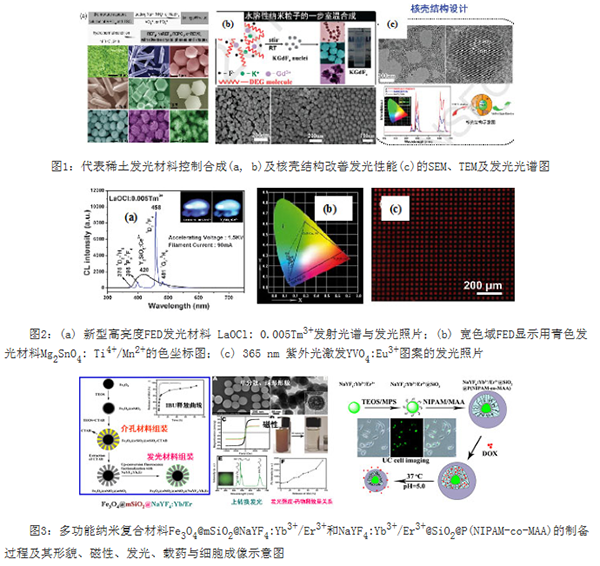
Rare-earth luminescent materials are a very important functional material, and they have been widely used in lighting, display, biomedical analysis and other fields. Research and development of new high-performance rare earth luminescent materials are major national strategic needs.
Lin Jun, a researcher at the Changchun Institute of Applied Chemistry, Chinese Academy of Sciences, is aiming at the international frontier, focusing on field emission displays and biomedical luminescent materials, focusing on the controlled synthesis of rare earth luminescent materials, the control of morphology, the development of new high-performance materials, and the development of complex multi-functions. The research and related results have had an important influence in related fields at home and abroad, and have laid some experimental and theoretical foundations for rare earth luminescent materials in the field of display and biomedicine, and have made important contributions to expanding and enhancing China's influence and status in the field of rare earth luminescent materials. Recently, this achievement won the first prize of 2014 Jilin Province Natural Science Award.
They developed a simple universal hydrothermal technique using sodium citrate as a morphology control agent to prepare a variety of uniform nano/micron rare earth luminescent materials, achieving controllable adjustments to the size and morphology of the material, revealing the luminescent properties of the material and The dependence of morphology and size, and the development of a glycol/water mixed solvent technology, etc., to simultaneously synthesize controllable water-soluble rare-earth luminescent nanomaterials in a one-step process, and solved the difficulty of direct application of hydrophobic rare-earth luminescent materials to biological applications. The problem is that an effective way to block the annihilation of nanoluminescence by a homogeneous inorganic shell (core-shell structure) is proposed, and a significant increase in the upconversion luminescence intensity of the rare earth is achieved.
They proposed the use of partial energy transfer between the sensitizer and the activator ions and different activated ion co-doping methods to adjust the light emission color of the material and achieve multi-color light emission in a variety of single substrates; For wide-gamut, field-emission display luminescent materials, their performance indexes such as light emission brightness and color rendering properties exceed those of existing commercial materials; they have been successfully prepared by combining sol-gel technology with micro transfer templates and inkjet printing technologies. Various stripe and lattice light-emitting patterns provide a convenient new method for the production of high-resolution field emission display devices.
By means of grafting, sol-gel, electrospinning and other methods, magnetic components, porous components, targeted components, thermosensitive polymer hydrogels, and organic materials such as converted luminescent nanocrystals are organically combined to prepare a number of designs. At the same time, it has a multi-functional nanocomposite material with luminescent, magnetic and porous adsorption properties. This type of material integrates drug loading and temperature (pH) stimulus response release, multimodal imaging and other functions into one and finds that the drug is in a nanocomposite carrier. The effect of inhibiting tumor growth is significantly higher than that of the pure drug system, which provides a new way to achieve "integration" of diagnosis and treatment of malignant tumors.
The project has published a total of 150 articles in SCI journals such as Chem. Soc. Rev. and Adv. Funct. Mater. At the same time, it has had an important influence in related fields at home and abroad. It was invited to write a review article for magazines such as Chem. Soc. Rev. 4 articles; the sum of the influence factors of 8 representative papers is 86.68 (average 10.84 for each article and 24.89 for single article), 773 times for SCI, and 187 for the highest single article; 10 for 20 cores He was selected as an ESI high-cited Paper and was cited by SCI magazines such as Chem. Rev., Chem. Soc. Rev. for a total of 1481 times, applied for 1 Chinese patent for invention, and invited more than 20 times at important conferences at home and abroad.
Organic dyestuffs offers a wide array of colorants that can be utilized in the lubricant, fuel oil and wax industries. The applicable Dyes are available in liquid and powder forms.
Solvent Dyes, Wax Dyes, Solvent Based Dyes
Dynasty Chemicals (NingBo) Co., Ltd. , https://www.dychemco.com